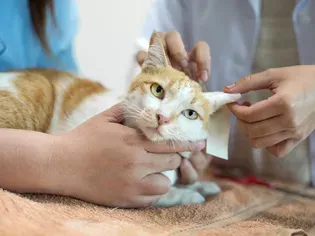Why You Should Not Scruff a Cat
Updated on 04/26/24

Why You Should Not Scruff a Cat
Cats are fascinating creatures that have captivated humans for centuries. Their independent nature, playful demeanor, and affectionate cuddles make them beloved companions. However, there are certain practices that can be harmful to cats, and scruffing is one of them.
Understanding the Scruffing Reflex
Scruffing refers to the act of grabbing a cat by the loose skin at the back of its neck. In kittens, this instinctual reflex can trigger a calming response, allowing the mother cat to transport and care for her young.
However, once a cat reaches adulthood, this reflex becomes less effective and can even be harmful.
Reasons to Avoid Scruffing Cats
* Pain and Discomfort: The skin on a cat's neck is delicate and sensitive. Scruffing can cause pain and discomfort, especially if done improperly.
* Fear and Anxiety: Cats may associate scruffing with negative experiences, such as being restrained or punished. This can lead to fear and anxiety, damaging your bond with your feline friend.
* Spinal Injuries: If the scruff is not held properly, it can put pressure on the cat's spine, potentially causing injury.
* Loss of Trust: Scruffing can break the trust between you and your cat. If your cat feels threatened or violated, it may become withdrawn or even aggressive.
Alternatives to Scruffing
There are several humane and effective alternatives to scruffing cats, including:
* Towel Wrap: Gently wrap your cat in a soft towel to restrain it. This provides support and comfort while preventing it from scratching or biting.
* Cat Carrier: Place your cat in a secure cat carrier if you need to transport it. This gives it a safe and familiar space.
* Positive Reinforcement: Reward your cat with treats or praise when it cooperates with you. This helps build a positive association with handling.
Examples of Why Scruffing is Harmful
* Veterinary Examination: While scruffing is sometimes used by veterinarians during exams, it can cause discomfort and anxiety. Gentle handling techniques, such as using a towel wrap, should be preferred.
* Home Grooming: Scruffing a cat while brushing or bathing can be painful. Instead, use a calming spray or distract your cat with a treat to make the experience more pleasant.
* Discipline: Scruffing should never be used as a form of punishment. It can damage your cat's trust and create a negative association with you.
Conclusion
Scruffing cats is a harmful practice that can cause pain, fear, and anxiety. It can also damage your bond with your cat and lead to spinal injuries. By choosing humane and effective alternatives, you can ensure the safety and well-being of your feline companion. Remember, your cat's trust and happiness should always be your top priority.
Explore More Pets

Cat Behavior Problems
How to Stop Aggression in Kittens

Long-Haired Cat Breeds
Siberian Cat: Breed Profile, Characteristics, & Care

Cat Behavior Problems
How to Stop Kittens From Scratching and Biting

Long-Haired Cat Breeds
Turkish Angora: Cat Breed Profile, Characteristics & Care

Basic Training
How to Socialize Your Kitten

Short-Haired Cat Breeds
Cute Pictures & Facts About Calico Cats & Kittens

Litter Box Training
Training Your Kitten to Use the Litter Box

Long-Haired Cat Breeds
10 Fun Facts About White Cats